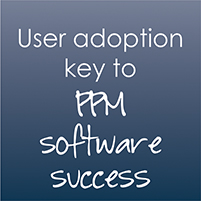User adoption of Project Portfolio Management (PPM) software is essential to achieving the application’s main aim of delivering projects to support the organisation’s business objectives. The uptake of the tool thus has a direct impact on the project office’s successful execution of corporate strategy.
“Today’s decision-makers are demanding a return on investment on their expenditure. A Total Economic Impact Analysis has shown that investment in a comprehensive PPM tool is likely to provide an ROI of more than 250 percent. Yet, to achieve the total value of the tool, user adoption is key,” says Guy Jelley, CEO at Post Vision Technology.
In the study, Defining Enterprise Software Success, by the Sand Hill Group and Neochange, 70 percent of professionals and business leaders said that effective user adoption is the most critical factor for software success and return-on-investment. Software functionality came in at a mere one percent, with organisation change at 16 percent and process alignment at 13 percent.
“To achieve successful user adoption, organisations should ensure that the initial implementation is not bloated with features and functionalities that do not focus on the organisation’s core requirement. Unfortunately, however, solutions are often packed with extra features, which clients want but don’t necessarily need, and these can overwhelm users, resulting in a low acceptance by users.”
He adds that organisations should also make certain that the implementation covers the entire user base and is not limited to a sub-set of users only.
“The key to the software’s success is adoption by all users – from the start. An organisation will not gain accurate exposure to feedback and acceptance from all types of users if the software is rolled out to only one group of stakeholders. This is because project sponsors, owners, managers and team members all have different requirements that the tool must meet.
“Collaboration,” stresses Jelley, “is a crucial ingredient when implementing a PPM solution, as only when the entire project team is collaborating can projects be adequately tracked, and issues, risks and actions effectively communicated. These factors all have a substantial impact on time and budget and, ultimately, project success, leading directly to organisational success.”
Forrester Research recently delved into the subject of lessons learned in PPM software implementations and summarised the experiences of the more than 50 PPM software clients it interviewed from 14 PPM software vendors as: The most obvious, and arguably the most common, reason for PPM implementation failure is that the intended audience isn’t using the tool properly or at all, allowing important decisions and updates to be made outside the tool in hallway conversations and untraceable spreadsheets.
To gain the total value of a PPM tool, Jelley advises that a company defines steps at the software’s implementation phase to ensure that all users are involved and are utilising only the required functionality to achieve business objectives.
He recapitulates, “Implementation should be kept simple to achieve user acceptance. Offer all users 20 percent of the software’s core functionality and make certain that everyone uses it, rather than equip 20 percent of users with a full house of functionality and expect success. And, only once all users are using the core functionality, then should a company look to grow the functionality base.”



